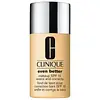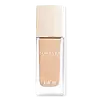What's inside
What's inside
 Key Ingredients
Key Ingredients

 Benefits
Benefits

 Concerns
Concerns

 Ingredients Side-by-side
Ingredients Side-by-side

Ethylhexyl Methoxycinnamate 5.9%
UV AbsorberTitanium Dioxide 3.5%
Cosmetic ColorantZinc Oxide 2.8%
Cosmetic ColorantWater
Skin ConditioningMethyl Trimethicone
Skin ConditioningPhenyl Trimethicone
Skin ConditioningDimethicone
EmollientTriethylhexanoin
MaskingButylene Glycol
HumectantTrimethylsiloxysilicate
EmollientYeast Extract
Skin ConditioningPEG-10 Dimethicone
Skin ConditioningLauryl PEG-9 Polydimethylsiloxyethyl Dimethicone
Skin ConditioningAlumina
AbrasiveCitrus Grandis Peel Extract
AstringentBetula Alba Bark Extract
MaskingSaccharomyces Lysate Extract
HumectantAstrocaryum Murumuru Seed Butter
EmollientC12-15 Alkyl Benzoate
AntimicrobialGlycerin
HumectantSodium Myristoyl Sarcosinate
CleansingAcetyl Glucosamine
Skin ConditioningCaprylyl Methicone
Skin ConditioningMethicone
EmollientPolyglyceryl-6 Polyricinoleate
EmulsifyingDisteardimonium Hectorite
StabilisingDimethicone Crosspolymer-3
Skin ConditioningIsopropyl Titanium Triisostearate
EmollientLecithin
EmollientLaureth-7
EmulsifyingTocopheryl Acetate
AntioxidantMagnesium Ascorbyl Phosphate
AntioxidantDimethicone/PEG-10/15 Crosspolymer
Dipropylene Glycol
HumectantSodium Chloride
MaskingCaprylyl Glycol
EmollientTetrahexyldecyl Ascorbate
AntioxidantDisodium EDTA
Phenoxyethanol
PreservativePolyaminopropyl Biguanide
PreservativeCI 77891
Cosmetic ColorantIron Oxides
Mica
Cosmetic ColorantCI 77163
Cosmetic ColorantEthylhexyl Methoxycinnamate 5.9%, Titanium Dioxide 3.5%, Zinc Oxide 2.8%, Water, Methyl Trimethicone, Phenyl Trimethicone, Dimethicone, Triethylhexanoin, Butylene Glycol, Trimethylsiloxysilicate, Yeast Extract, PEG-10 Dimethicone, Lauryl PEG-9 Polydimethylsiloxyethyl Dimethicone, Alumina, Citrus Grandis Peel Extract, Betula Alba Bark Extract, Saccharomyces Lysate Extract, Astrocaryum Murumuru Seed Butter, C12-15 Alkyl Benzoate, Glycerin, Sodium Myristoyl Sarcosinate, Acetyl Glucosamine, Caprylyl Methicone, Methicone, Polyglyceryl-6 Polyricinoleate, Disteardimonium Hectorite, Dimethicone Crosspolymer-3, Isopropyl Titanium Triisostearate, Lecithin, Laureth-7, Tocopheryl Acetate, Magnesium Ascorbyl Phosphate, Dimethicone/PEG-10/15 Crosspolymer, Dipropylene Glycol, Sodium Chloride, Caprylyl Glycol, Tetrahexyldecyl Ascorbate, Disodium EDTA, Phenoxyethanol, Polyaminopropyl Biguanide, CI 77891, Iron Oxides, Mica, CI 77163
Water
Skin ConditioningC9-12 Alkane
SolventCaprylic/Capric Triglyceride
MaskingPropanediol
SolventGlycerin
HumectantCoco-Caprylate/Caprate
EmollientPentylene Glycol
Skin ConditioningC15-19 Alkane
SolventPullulan
Sorbitan Sesquiisostearate
EmulsifyingStearalkonium Hectorite
Gel FormingTrimethylsiloxysilicate
EmollientHibiscus Sabdariffa Flower Extract
Skin ConditioningIris Florentina Root Extract
MaskingPolyglyceryl-3 Polyricinoleate
EmulsifyingPolyglyceryl-3 Diisostearate
EmulsifyingSodium Chloride
MaskingButylene Glycol
HumectantSodium Myristoyl Glutamate
CleansingHydroxyacetophenone
AntioxidantParfum
MaskingEthylhexylglycerin
Skin ConditioningEthylene Brassylate
MaskingPotassium Sorbate
PreservativeHyaluronic Acid
HumectantAluminum Hydroxide
EmollientTocopherol
AntioxidantPolyhydroxystearic Acid
EmulsifyingHydrolyzed Viola Tricolor Extract
Skin ProtectingTetramethyl Acetyloctahydronaphthalenes
MaskingLinalyl Acetate
MaskingRosa Multiflora Fruit Extract
MaskingTropaeolum Majus Flower/Leaf/Stem Extract
Skin ConditioningIsostearic Acid
Cleansing1,2-Hexanediol
Skin ConditioningCaprylyl Glycol
EmollientLecithin
EmollientSodium Benzoate
MaskingCitric Acid
BufferingCI 77891
Cosmetic ColorantCI 77491
Cosmetic ColorantCI 77492
Cosmetic ColorantCI 77499
Cosmetic ColorantWater, C9-12 Alkane, Caprylic/Capric Triglyceride, Propanediol, Glycerin, Coco-Caprylate/Caprate, Pentylene Glycol, C15-19 Alkane, Pullulan, Sorbitan Sesquiisostearate, Stearalkonium Hectorite, Trimethylsiloxysilicate, Hibiscus Sabdariffa Flower Extract, Iris Florentina Root Extract, Polyglyceryl-3 Polyricinoleate, Polyglyceryl-3 Diisostearate, Sodium Chloride, Butylene Glycol, Sodium Myristoyl Glutamate, Hydroxyacetophenone, Parfum, Ethylhexylglycerin, Ethylene Brassylate, Potassium Sorbate, Hyaluronic Acid, Aluminum Hydroxide, Tocopherol, Polyhydroxystearic Acid, Hydrolyzed Viola Tricolor Extract, Tetramethyl Acetyloctahydronaphthalenes, Linalyl Acetate, Rosa Multiflora Fruit Extract, Tropaeolum Majus Flower/Leaf/Stem Extract, Isostearic Acid, 1,2-Hexanediol, Caprylyl Glycol, Lecithin, Sodium Benzoate, Citric Acid, CI 77891, CI 77491, CI 77492, CI 77499
Ingredients Explained
These ingredients are found in both products.
Ingredients higher up in an ingredient list are typically present in a larger amount.
Butylene Glycol (or BG) is used within cosmetic products for a few different reasons:
Overall, Butylene Glycol is a safe and well-rounded ingredient that works well with other ingredients.
Though this ingredient works well with most skin types, some people with sensitive skin may experience a reaction such as allergic rashes, closed comedones, or itchiness.
Learn more about Butylene GlycolCaprylyl Glycol is a humectant and emollient, meaning it attracts and preserves moisture.
It is a common ingredient in many products, especially those designed to hydrate skin. The primary benefits are retaining moisture, skin softening, and promoting a healthy skin barrier.
Though Caprylyl Glycol is an alcohol derived from fatty acids, it is not the kind that can dry out skin.
This ingredient is also used as a preservative to extend the life of products. It has slight antimicrobial properties.
Learn more about Caprylyl GlycolCi 77891 is a white pigment from Titanium dioxide. It is naturally found in minerals such as rutile and ilmenite.
It's main function is to add a white color to cosmetics. It can also be mixed with other colors to create different shades.
Ci 77891 is commonly found in sunscreens due to its ability to block UV rays.
Learn more about CI 77891Glycerin is already naturally found in your skin. It helps moisturize and protect your skin.
A study from 2016 found glycerin to be more effective as a humectant than AHAs and hyaluronic acid.
As a humectant, it helps the skin stay hydrated by pulling moisture to your skin. The low molecular weight of glycerin allows it to pull moisture into the deeper layers of your skin.
Hydrated skin improves your skin barrier; Your skin barrier helps protect against irritants and bacteria.
Glycerin has also been found to have antimicrobial and antiviral properties. Due to these properties, glycerin is often used in wound and burn treatments.
In cosmetics, glycerin is usually derived from plants such as soybean or palm. However, it can also be sourced from animals, such as tallow or animal fat.
This ingredient is organic, colorless, odorless, and non-toxic.
Glycerin is the name for this ingredient in American English. British English uses Glycerol/Glycerine.
Learn more about GlycerinLecithin is a term for a group of substances found in the cell membranes of plants, animals, and humans. They are made up of mixture of phospholipids.
This ingredient has emollient and emulsifying properties.
As an emollient, lecithen helps soften the skin and creates a barrier to keep moisture in.
As an emulsifier, it also helps prevent water and oil ingredients from separating. Lecithin can also help ingredients be better absorbed by the skin.
This is because the phospholipids in lecithin produce liposomes. Liposomes help other ingredients get through the skin barrier.
Depending on the source of this ingredient, lecithin may not be fungal acne safe. This is because some sources of lecithin come from soybean oil, which may feed the malassezia yeast that feeds fungal acne.
We recommend reaching out to the brand you are purchasing from to inquire about the source of their lecithin.
Some other names for this ingredient include soy lecithin and deoiled soy lecithin.
Learn more about LecithinChances are, you eat sodium chloride every day. Sodium Chloride is also known as table salt.
This ingredient has many purposes in skincare: thickener, emulsifier, and exfoliator.
You'll most likely find this ingredient in cleansers where it is used to create a gel-like texture. As an emulsifier, it also prevents ingredients from separating.
There is much debate on whether this ingredient is comedogenic. The short answer - comedogenic ratings don't tell the whole story. Learn more about comegodenic ratings here.
The concensus about this ingredient causing acne seems to be divided. Research is needed to understand if this ingredient does cause acne.
Scrubs may use salt as the primary exfoliating ingredient.
Learn more about Sodium ChlorideThis silicone is an emollient. Emollients create a thin film on the skin to prevent moisture from escaping.
It is not soluble in water and helps increase water-resistance in products.
According to a manufacturer, it can blend seamlessly with silicone oils, such as Cyclopentasiloxane.
Learn more about TrimethylsiloxysilicateWater. It's the most common cosmetic ingredient of all. You'll usually see it at the top of ingredient lists, meaning that it makes up the largest part of the product.
So why is it so popular? Water most often acts as a solvent - this means that it helps dissolve other ingredients into the formulation.
You'll also recognize water as that liquid we all need to stay alive. If you see this, drink a glass of water. Stay hydrated!
Learn more about Water